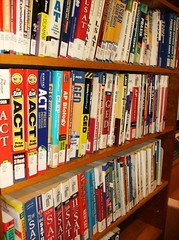Essential Steps for GED Test Preparation

Essential Steps for GED Test Preparation
Preparing for the General Education Development Test, or GED, can be overwhelming — where do you start? Start by knowing that it’s worth the time and effort since good test prep in the right skill areas builds knowledge and thinking skills, the most important elements to getting a good ged test score.
Here are the four essential steps for GED test preparation:
Assess Abilities
Without an understanding of what you already know, or your existing knowledge and abilities, it’s difficult to map a study plan. So first determine the knowledge and skills you already have, along with the ones important for the test. Assessing abilities will also determine skill weaknesses, and identify critical areas for study.
The best way to make a self-assessment is with an Official GED Practice Test. Practice tests include the same type of questions as the actual GED test and measure the same skills and knowledge the test expects you to know. Also, practice tests are good score indicators, and they’ll help you become familiar with the way the test works. Having a working knowledge of the test is another way to improve the final test score.
Practice tests may be available at local bookstores, through community colleges or ordered online. When shopping online, just ensure your tests are the official practice tests.
Develop a Study Plan
Think of the results of your assessment or practice test as a map of the study plan. Scores indicate which test areas require little or no study, basic reviews or test areas where there are real weaknesses. Design a study plan that reflects areas for reviews and for developing knowledge and strengthening skills or developing new ones.
You’ll also want to reinforce good skills since higher test scores in some areas can help compensate for lower test scores in others. And, strengthening skills you already have help you develop skills you don’t have.
Use the Study Plan
Your study plan really works if you exercise it. It should include two components: instruction and application.
Instruction: You’ll want to relearn basic knowledge in any test area where the assessment identified skill weaknesses. There are many ways to do this. Most community colleges offer free or low-cost GED classes or basic skills classes. Study guides and online GED courses are also available, and provide good learning solutions for adults who haven’t had good classroom experiences, or have schedule conflicts, or lots of family and work responsibilities.
Application: Use knowledge that you learn anew, or relearn. Apply it. Make sure your study plan includes plenty of practical problem solving with the types of problems on practice tests, or in study guides. This will help prepare you for the test and also identify any areas that require additional instruction.
Exercise Thinking Skills
Make sure your preparation involves a lot of thinking skill practice, to develop or improve critical thinking skills. The GED test requires that you show what you know – not what you should know. So critical thinking in all test areas is the most important skill measured by the GED. The test will call for you to analyze material, evaluate it and make inferences, deductions and judgments. Unlike the memorization skills so many students use in high school, the GED measures ‘application of knowledge’ skills, or the ability to use knowledge to solve problems.
Determine Readiness
Once you feel you’ve mastered new knowledge and skills — and strengthened existing skills — assess again. Five Official GED Practice Tests are available, and include all test areas: Mathematics, Language Arts Reading, Language Arts Writing, Science, and Social Studies. Like your first assessment, your scores on these tests will reflect an actual test score so you’ll know if you’re really test-ready, or if you need more instruction, application and further work to improve thinking skills.
Preparing for the GED is a major undertaking. By using these four essential steps, you’ll learn exactly what you need to earn this important educational and career credential.